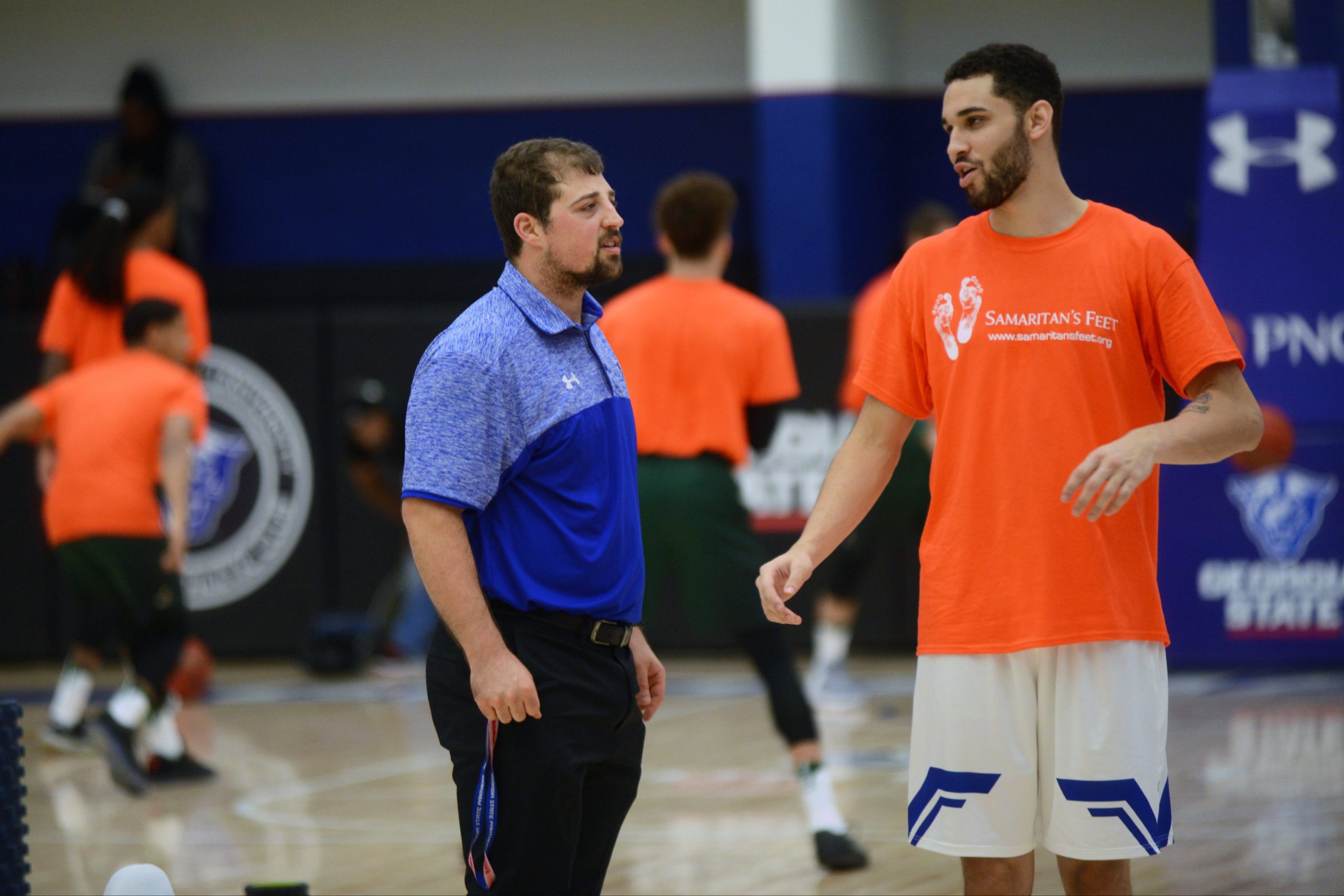
When one thinks of the significant components of creating the body of a championship team, talent and coaching sprinkled with a generous amount of luck regarding players not suffering severe injuries is what typically comes to mind. However, there is another vital piece to the puzzle that tends to get overlooked– that is the strength and conditioning aspect of sports.
Nate Majnaric is entering his third year as the assistant strength and conditioning coach for the men’s basketball team at Georgia State. But becoming the assistant strength and conditioning coach at the university was not his primary goal in life.
Majnaric walked on as a football player at West Virginia with intentions of perhaps playing in the NFL. Nonetheless, he grew fond of the idea of becoming a strength and conditioning coach when his brother was injured by deadlifting as a sophomore in high school. His coaches at West Virginia then informed him about opportunities at the university that would prove to be beneficial to his future career choice.
“My brother got hurt, and it cost him his junior year, and that got me thinking about strength and conditioning,” Majnaric said. “I had great coaches there who had said ‘we have internships here if you’re interested.'”
Majnaric did not hesitate to take the opportunity to intern for Daryl Bauer, the strength and conditioning coach on staff for the Mountaineers football program.
“I interned with him for three years while I played [football],” Majnaric said. “So Mike Joseph, Daryl, Kevin and all the coaches at West Virginia really got me started.”
Since joining the Georgia State staff in 2015, Majnaric has seemingly found his comfort zone with the rest of the coaches, but more importantly with the players.
“The guys are really good, they respond really well to me,” Majnaric said of how he has created a great relationship with the players thus far. He also said that for the players, “it’s not about how many sets, or reps, or weights you can push, it’s about creating you as a person physically so you can do what you do.”
“So, it’s been great. They respond well to me, and we have a great communication line, and that’s all I ask. Communicate with me, and we’ll figure it out.”
During the process of developing a one-of-a-kind relationship with the players, Majnaric created a competitive challenge to get them enthused about being in the weight room.
“To get them excited, I had a workout-warrior challenge,” Majnaric said. “Each week, after every week, we would have that competition, and I’d rank them pointwise. If you won the most amount of points that week, you got workout warrior for the week; you got bonus points for your team because I split them up into three teams and then you got to pick the music for the next week.”
Junior forward Malik Benlevi is one player in particular that has not only enjoyed the workout-warrior competition, but has also found much success by winning the challenge multiple times.
“It’s all mental,” Benlevi said. ” When you think you’re tired, you gotta push through.”
Of the many barriers Majnaric faces of being a strength and conditioning coach, finding time to train the players is at the top of the list. Majnaric works with both the men’s and women’s basketball team, so time plays a significant factor in creating the workout schedule for both sides.
“Scheduling sometimes gets tough because the way classes are at Georgia State, everyone is going in the mornings so figuring out how to balance that,” Majnaric said. “Out of season is pretty easy to keep the schedule. In season is all travel because we’re on the road a lot. So you’re just tryna find ways to train in hotels and on the road the best you can and tryna stay as consistent as possible, so that’s the biggest challenge there. But other than that, training is training no matter where you’re at, it doesn’t change much.”
Fortunately, Majnaric works alongside the head athletic trainer, Dinika Johnson. The two assist each other in developing workouts for players under certain circumstances.
“Dinika is great; we have a great relationship. She lets me know injuries, and what’s going on or what she might see and her input is valuable because it helps us to adjust the program to certain players.”
So just how does Majnaric create a regime for the players?
“Going into the first week of offseason, they haven’t trained as much as in-season because of time, so you just try to build size and get them back in the weight room and get them used to doing it,” Majnaric said. “Towards the summer, you start to express strength more, then preseason you start expressing power more and doing things of that nature.”
“But you just go through and you look at the players, and it comes down to basic movements: you got to squat, you have to henge, you have to do single-leg movement, you have to do upper-body push-and-pull and just make sure you train at all points of motion and work hard.”
The Panthers’ men’s basketball team have played 34 games on the season thus far, and they have not had a player miss significant time due to an injury. While many tend to credit the coaching staff and the players for the success of the team, Majnaric deserves credit for keeping the players in top-notch shape for the duration of a long season.
